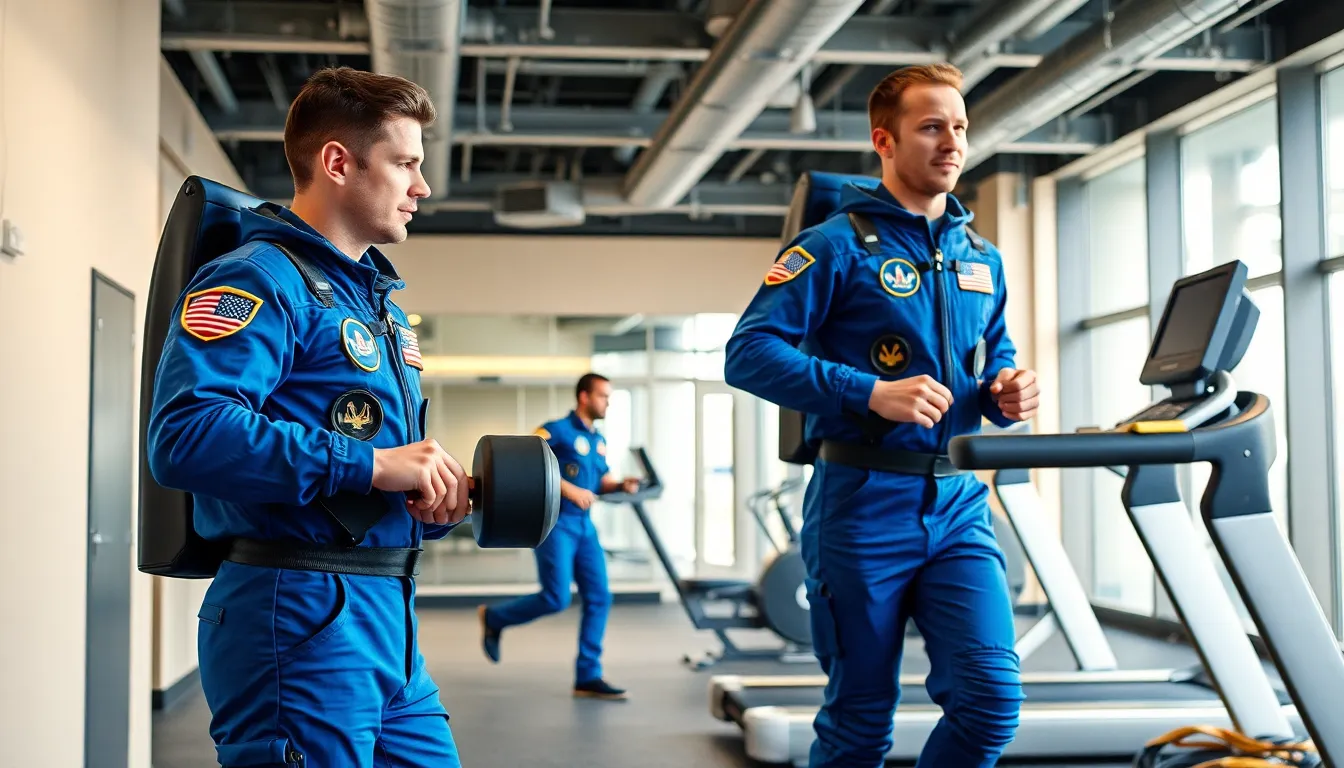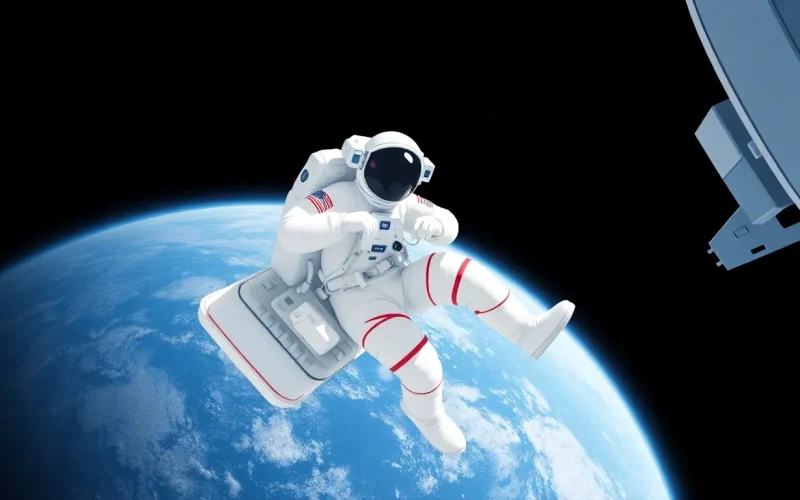Table of Contents
ToggleWhen you think of astronauts, what comes to mind? Maybe it’s the thrill of zero gravity or the sight of Earth from space. These brave explorers don’t just float around like a kid in a bouncy castle; they’re the ultimate multitaskers, juggling science experiments and spacewalks while looking fabulous in their snazzy suits.
History Of Astronauts
The history of astronauts marks significant milestones in human exploration beyond Earth. Pioneers of space travel overcame numerous challenges to expand knowledge of the universe.
Early Space Exploration
Early space exploration began in the mid-20th century. The Soviet Union launched Sputnik 1 in 1957, marking the first artificial satellite in orbit. Yuri Gagarin followed as the first human in space in 1961, completing a significant milestone for humanity. The United States responded by launching Project Mercury, which aimed to send astronauts into orbit. Alan Shepard became the first American in space during the Freedom 7 mission in 1961. NASA’s Apollo program further revolutionized space exploration with Apollo 11, landing humans on the Moon in 1969. This monumental mission demonstrated the vast potential of human spaceflight.
Notable Pioneer Astronauts
Several pioneer astronauts paved the way for future space travel. Yuri Gagarin achieved historic significance as the first man in space, showcasing human capabilities beyond Earth. Alan Shepard, the first American in space, inspired a nation with his involvement in space endeavors. Valentina Tereshkova became the first woman to fly in space in 1963, breaking barriers for females in the field. Neil Armstrong’s iconic step on the Moon made him a global symbol of exploration. Sally Ride, the first American woman in space, further transformed perceptions of astronauts with her mission in 1983. Each of these astronauts played crucial roles in shaping the future of space exploration.
Training Required For Astronauts

Astronauts undergo rigorous training to prepare for their missions. This preparation encompasses various physical and technical skill sets essential for successful space missions.
Physical Fitness
Physical fitness plays a crucial role in an astronaut’s training regimen. Astronauts must maintain excellent cardiovascular health, along with strength and flexibility. Daily workouts include running, swimming, and weight training to build endurance. Rigorous exercises simulate the physical demands of space travel, helping astronauts adapt to microgravity. Regular medical check-ups ensure individuals meet health standards. Additionally, astronauts experience challenges like exposure to extreme environments, which further enhances their physical resilience.
Technical Skills
Technical skills form the backbone of astronaut training. Astronauts learn to operate complex spacecraft systems and perform intricate repairs. Simulation programs allow trainees to practice maneuvers, familiarize themselves with navigation tools, and manage emergency situations. Knowledge of scientific research protocols is essential for conducting experiments in space. Robust training in robotics equips astronauts to handle various onboard tasks. Furthermore, familiarity with spacewalking procedures enhances an astronaut’s ability to work outside the spacecraft.
Roles And Responsibilities Of Astronauts
Astronauts carry out diverse roles during their missions in space. These responsibilities blend teamwork, technical expertise, and keen observational skills, particularly in research and spacewalks.
Research And Experiments
Conducting research represents a vital duty of astronauts. They perform scientific experiments that address fundamental questions about biology, physics, and astronomy. Many experiments take advantage of microgravity conditions, offering insights unattainable on Earth. Astronauts also collect data through tools and instruments aboard the International Space Station (ISS). Utilizing advanced technology, they analyze samples and document findings. Collaboration with scientists on Earth enhances the applicability of research results to further human knowledge and space exploration.
Spacewalks And Repairs
Spacewalks, or extravehicular activities, are essential components of an astronaut’s mission. During these tasks, astronauts venture outside their spacecraft to conduct repairs or upgrades. Skills in maneuvering in zero gravity become crucial during these operations. Astronauts use specialized tools and equipment to fix systems and maintain the ISS. Prior training prepares them for the challenges of working in the vacuum of space. Coordinating with mission control ensures safety protocols are met while performing these critical functions. Astronauts often complete repairs that support the ongoing functionality of space missions.
The Future Of Astronauts
The future of astronauts promises exciting advancements in space exploration. Upcoming missions aim to expand human presence beyond low Earth orbit and onto the Moon and Mars.
Upcoming Missions
NASA’s Artemis program plans to return humans to the Moon by 2024, aiming for sustained lunar exploration. This initiative focuses on establishing a lunar base to facilitate future missions to Mars. SpaceX’s Starship project works on transporting astronauts to destinations like the Moon and eventually Mars. Additionally, international collaborations continue, with various space agencies preparing missions to study asteroids and other celestial bodies. These missions emphasize the importance of deep space research, harnessing the skills and experience of astronauts to unlock new scientific insights.
Innovations In Space Travel
Innovations in space travel enhance both safety and efficiency for astronauts. Advancements in spacecraft technology improve life support systems and navigation tools, addressing the challenges of long-duration missions. 3D printing in space allows astronauts to create tools and parts on-demand, reducing the need for extensive supplies. Enhanced training programs utilize virtual and augmented reality, providing astronauts with realistic simulations of space environments. Furthermore, regenerative life support systems are being developed to recycle air and water, making deep space exploration more sustainable. With these innovations, astronauts face fewer constraints, paving the way for new discoveries and long-term human habitation off Earth.
Astronauts embody the spirit of exploration and innovation. Their journeys into space not only push the boundaries of human capability but also deepen understanding of our universe. As they conduct vital research and perform intricate tasks, they inspire future generations to dream of the stars.
With advancements in technology and ambitious missions on the horizon, the role of astronauts is set to evolve. The potential for human habitation on the Moon and Mars opens new frontiers for scientific discovery. As humanity continues to reach for the cosmos, astronauts will remain at the forefront of this extraordinary adventure, paving the way for a future where space travel becomes a reality for many.





